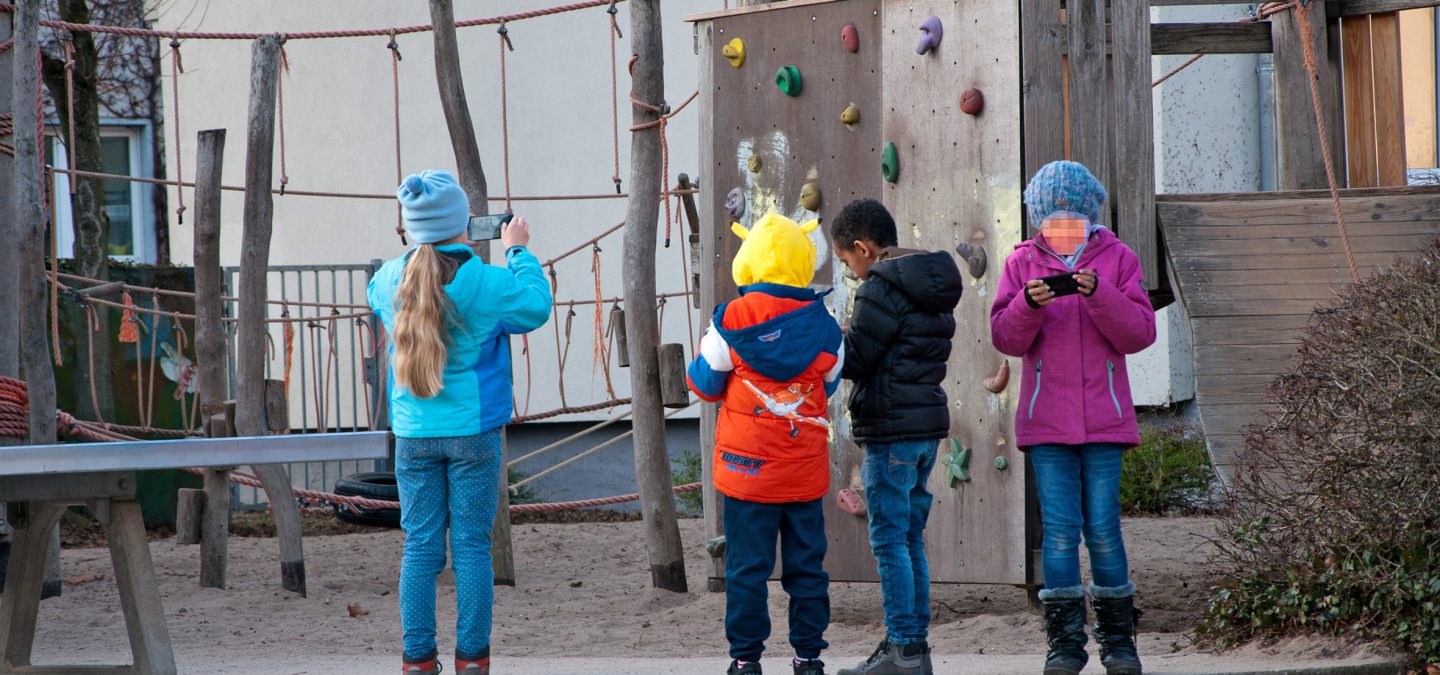
Keep up with our latest news and projects!

In 1977 Kevin Lynch presented the results of his famous “Growing Up in Cities” study on children’s use and perception of spatial environments in cities around the globe.1 The main aim was to inform planning policies with a better understanding of how the built environment impacts children’s behaviour, which could lead to urban quality improvements from children’s point of view. The authors emphasised that the value of children’s participation should not be neglected and pointed towards the untapped potential in the way they observe the city from a different perspective.
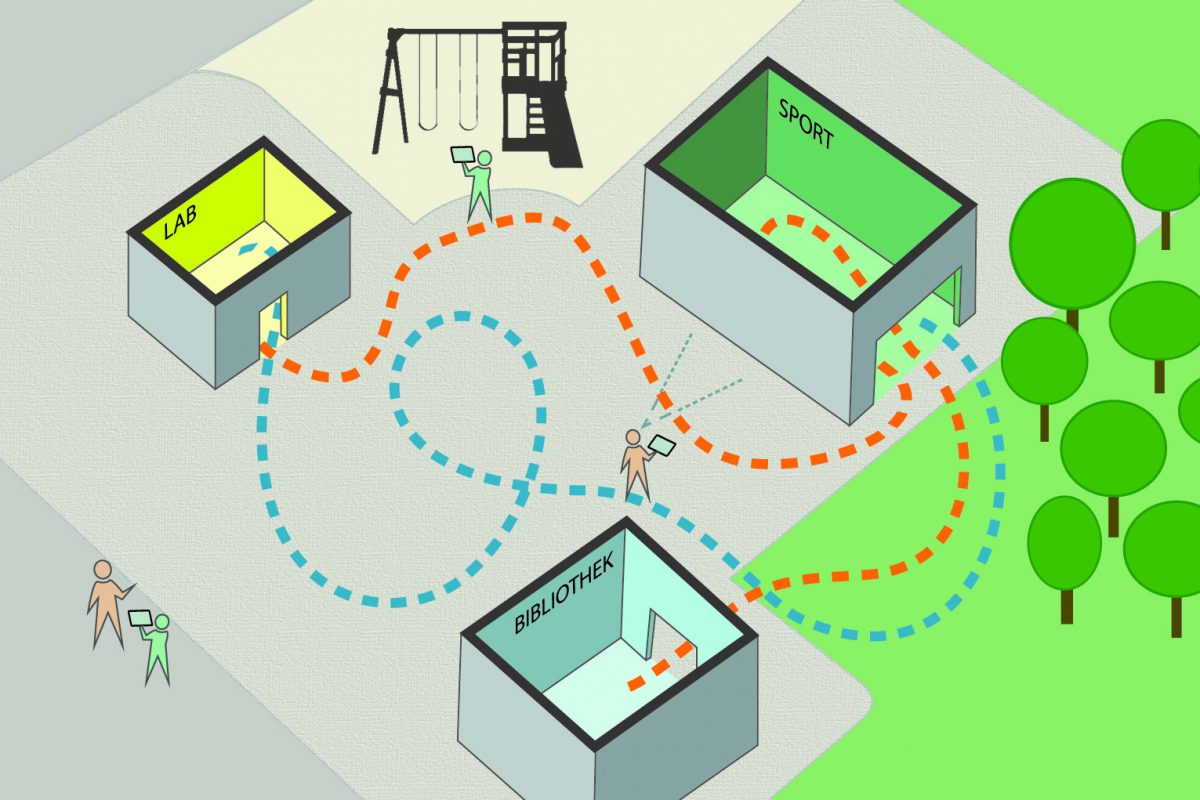 Visualisation of the study set-up
Visualisation of the study set-up
After four decades, the project’s research questions and findings of Lynch’s work remain very relevant – both for architects and urban designers, as for the young users. This is specially the case for urban schools as important “settings” (fields of action), in which the children are spending an increasing amount of time. Already in the 1970s, Lynch stressed that children had less time for free activities and that their daily lives were fully programmed by school, and TV at home. Nowadays, as the majority of school systems turn to the full-time model, the majority of children’s time is spent with daily learning and extra-curricular activities, as well as using digital devices during leisure time.
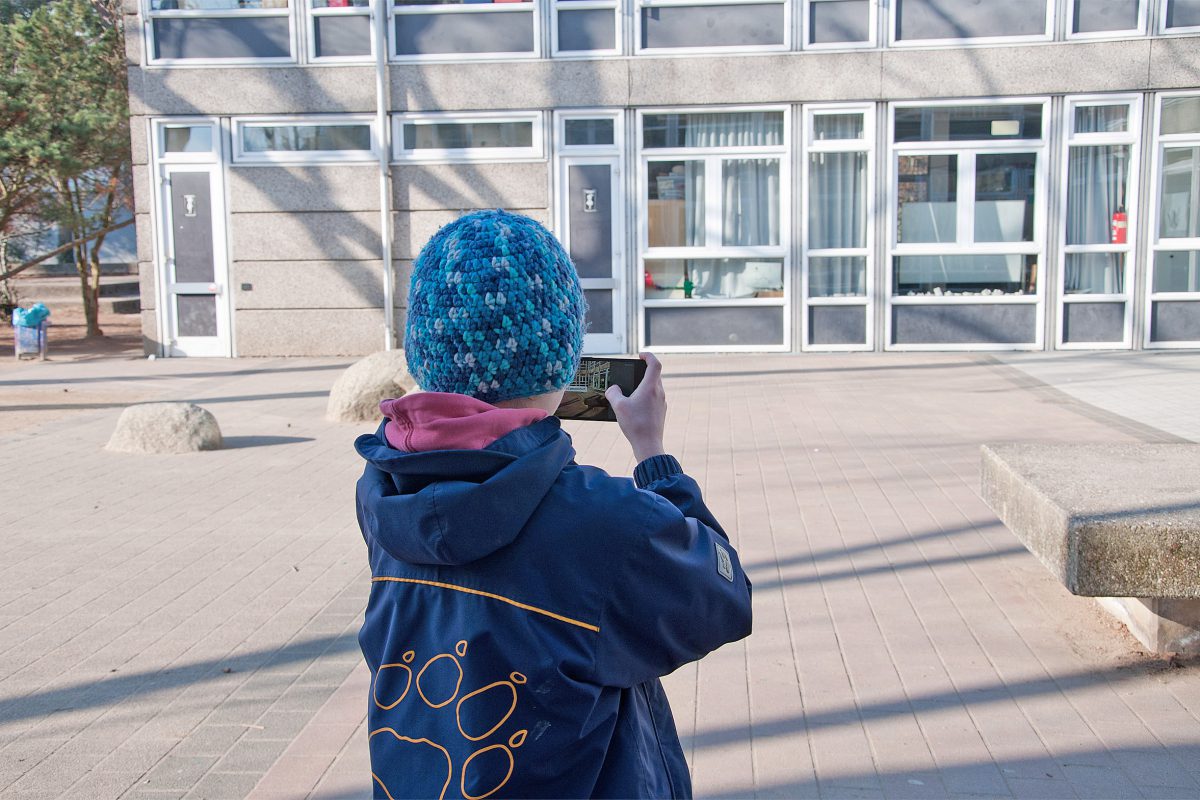 Participants using the application in the outdoor area.
Participants using the application in the outdoor area.
A growing body of international research underlines how school design influences students’ learning progress, social interaction, physical and cognitive development. However, less attention has been paid to the questions of a) how we can design more livability, physical activity, and mental well-being into school environments, and b) how can children play a more vital role in the process.
To address these issues, the research team of TU Darmstadt developed a toolbox, which makes children the direct observers of their surrounding environment and is encouraged to express their opinions. It is inspired by Lynch’s work and includes three main techniques from his research: individual/group interviews with the children, taking photographs and analysing them, and the collaborative creation of spatial mental maps. The toolbox, however, integrates a new generation of digitally- supported surveys, mapping, and co-design tools to further explore how students can be encouraged in co-creating their learning spaces and bringing forward their expectations and needs.
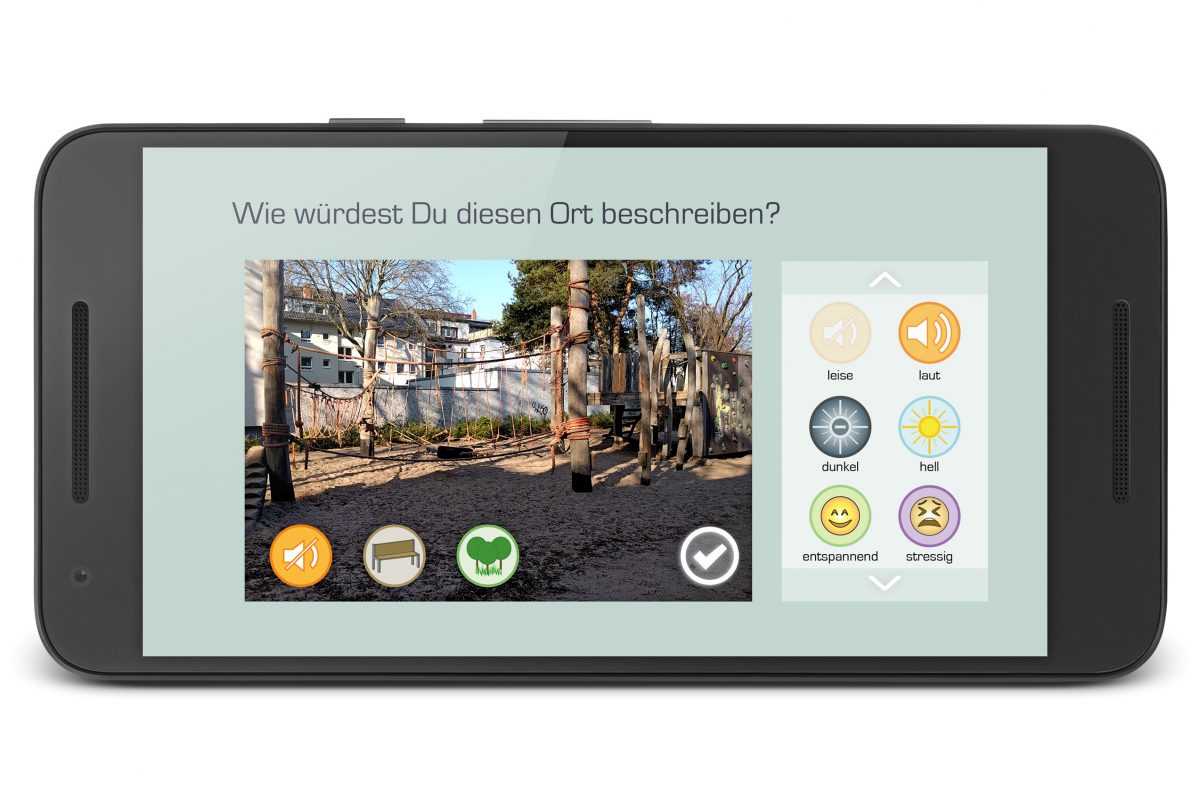 Screenshot of the mobile application. “How would you describe this place?”
Screenshot of the mobile application. “How would you describe this place?”
The pilot study was conducted in an elementary school in the city of Darmstadt (Germany). The school has 8 classrooms (from the 1st to 4th grade) and provides extracurricular activities and teacher’s support after the lessons, which means that the children spend a significant amount of time there. The school is situated in a dense inner-city residential neighbourhood, surrounded by both high and low traffic streets, and residential buildings. Thus, the outdoor school space is very limited and there are barriers for movement due to the road safety considerations.
During the study, students from all grades (aged 6-10 years, n=74) assessed their school’s indoor and outdoor environment using a mobile game prototype based on the “I spy” game2 principle. Each participant received a smartphone with the installed application. The children documented spots they considered to be suitable to become physically active, to relax, to learn, as well as their favorite spots or the ones they dislike, and described them along environmental and behavioral experiences using the stickers shown above – producing their own maps, photos and drawings to discuss the existing spatial environment. The collected data helped to identify a set of activity areas in the school and the need for restorative niches and communal spaces of different sizes. In a further step, they sketched proposals on paper, suggesting improvements in specific areas indoors and outdoors, such as qualifying an existing green space as a leisure area, or a set of rules for the ideal classroom, which includes reading corners. The latter turned out to be popular spaces to relax and learn but only accessible to 2 of the 8 classes.
The mobile application and co-design toolbox MoMe@school3 may be of interest to planners and architects of learning environments seeking to engage children in the (re-)design process. The toolbox helps to understand how the children use, perceive, and feel about their school space. The child-led assessment captures three levels: school building level (indoor), street level (outdoor environment and the edges, connecting to the city’s street network), and the environmental context in which children’s daily city life is embedded in (set times to do different activities, allowed activities, outlets to become active or relax). Additionally, designers and school representatives have a clear statement about which elements play a role in encouraging certain behaviours (i.e. be physically active, learn or relax), thanks to the detailed description of each space.
During the follow-up interviews, students expressed their enjoyment of sharing their views and ideas about their school, and being able to “tell their side of the story”. The experience with MoMe@school shows that a Lynch-inspired, digitally- supported toolbox helps children to learn about their urban school environment, increases their spatial knowledge, enables them to identify areas with high potential and in need of improvement, and articulate informed opinions about it. We hope this helps to form more responsible citizens, which are familiar with co-creation from an early age; starting from the first community space that they know: their school.
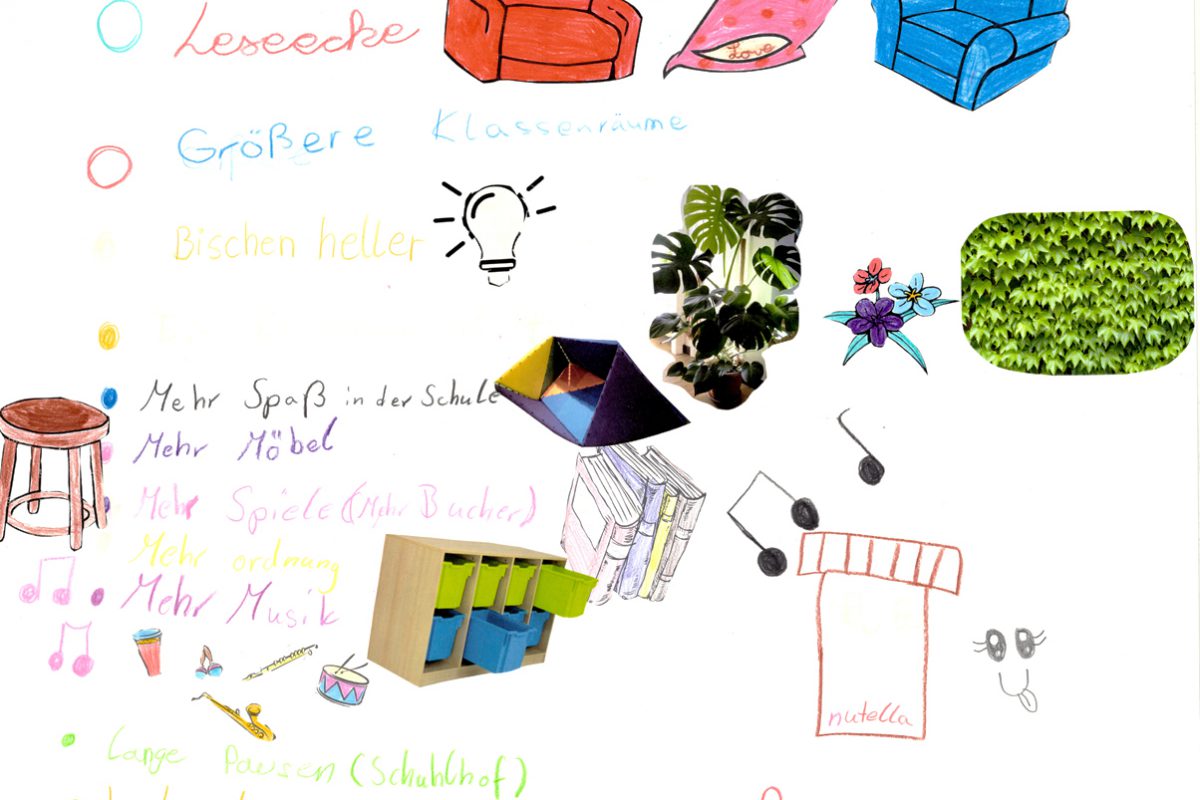 The ideal classroom includes: a reading corner with comfortable seating, more light and greenery, storage space and more material to play and learn.
The ideal classroom includes: a reading corner with comfortable seating, more light and greenery, storage space and more material to play and learn.
We suggest that this type of digital assessment is likely to stimulate children to engage more in participatory processes based on their statements during one-on-one interviews after playing: they stated enjoying using the app (all students completed the task) and some would have liked to use the app in other contexts, such as in their neighbourhood. The digital toolbox is, in theory, suitable for students to assess a wider area, as shown in previous studies using a similar app for adults to assess open spaces.4 Possible applications would be assessing streetscape and open spaces of the school’s neighborhood or children’s journeys between home and school. Such an extension would require adaptations to the concept, i.e. to include staff to accompany the children, or to integrate MoMe@school to educational programs such as “Safe Road to Schools”.
From this study, we learnt the eagerness with which children take part in the first phase of a re-design process (assessing the current state and proposing designs). They are willing to share what they see in the built environment and enjoy coming up with suggestions to improve spaces. Let’s get them more involved.
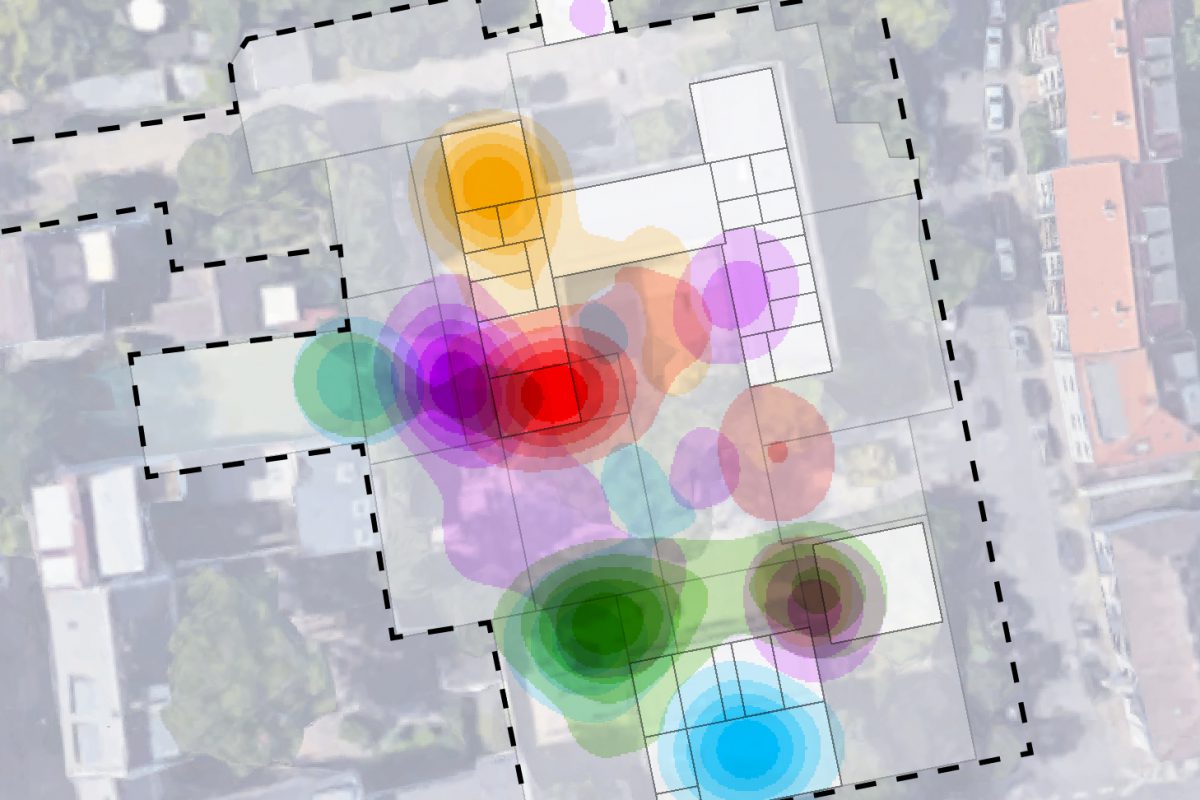 Ground floor map showing the location and density of the 5 different types of spaces within the school area.
Ground floor map showing the location and density of the 5 different types of spaces within the school area.
This article belongs to a series of stories about the city at eye level for kids! You can access the full book online in PDF or pre-order your hardcopy to be delivered to your home.
Get your book here1. Lynch, K. (1977). Growing Up in Cities. Cambridge, Mass.: MIT Press
2. a guessing game where the spy, says “I spy with my little eye …”, describing the object they see and players have to guess the object the Spy saw.
3. Halblaub Miranda, M., Ustinova, M., Tregel, T. & Knöll, M. (2017). MoMe@school – A pilot study on an analytical and participatory tool for active learning spaces design. Journal of Urban Design and Mental Health, 2017;3:10 (online)
4. Halblaub Miranda, M., Hardy, S., Knöll, M. (2015) MoMe: a context-sensitive mobile application to research spatial perception and behaviour, in: Human mobility, cognition and GISc. Conference proceedings, University of Copenhagen, pp. 29-30.